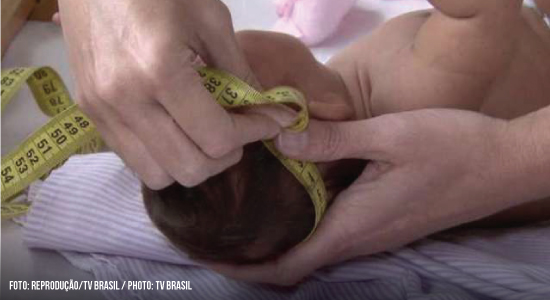
Children exposed to Zika may have development delays, study finds
Research has also reported two cases of infants born with microcephaly associated with mothers exposure to Zika virus during pregnancy and who had improved head circumference size after delivery
09/08/2019
Microcephaly associated with Zika results from brain parenchymal destruction and the two babies who recovered after birth had no such destruction, these were less severe cases of the disease
A research published in July in the journal Nature Medicine entitled Delayed childhood neurodevelopment and neurosensory alterations in the second year of life in a prospective cohort of ZIKV-exposed children brings the developmental outcomes of children exposed to Zika virus demonstrably in pregnancy and reveals that they may have developmental delays and sensorineural changes in the second year of life. The study also reported the case of two babies born with microcephaly who had normal brain development after delivery. However, these children had no brain parenchyma injury.
In total, 216 children of mothers with symptoms and positive PCR were followed for two years. The study found that neurological development is lower than expected in children exposed to the virus in the first weeks of pregnancy, while children who had exposure in recent weeks had fewer complications. According to Dr. Maria Elizabeth Moreira, a researcher at the Fernandes Figueira Institute, of the Oswaldo Cruz Foundation (IFF/Fiocruz), one of the authors of the research, the good news is that about 70% have been developing normally. However, the other 30% have some developmental delay and need to be followed at least until school age so that early diagnosis of delays is possible, giving the opportunity for referral to early stimulation specialists, she says.
Also, according to the author, in this observational study it was found that not all children without microcephaly who had changes in the neonatal period evolved poorly. “Developmental delay was diagnosed, with language function being the most affected in the Bayley test (35% of 146 children had below-average rates). Improvement of neurodevelopment has also been observed, especially in female children, full-term infants (born between 39 and 41 weeks of pregnancy), children with normal eye examinations and infection later in pregnancy”, details Dr. Maria Elizabeth Moreira. The results also showed improvement in head circumference growth in two children who had no brain parenchymal injury and children who developed autistic spectrum disorder, but the incidence was not higher than in the general population.
Among the children followed, eight had cases of microcephaly, of these, two returned to have adequate growth of the head circumference: one baby, who had intrauterine restriction, had its growth restored. The other underwent cranial surgery that opened the sutures that were prematurely closed in a condition known as craniosynostosis. These two children did not present neurological, motor, retinal or language problems after proper handling of their clinical situations, nutrition and adequate stimulation. Neither of these two children had cerebral parenchymal involvement.
Among children born without microcephaly, the diagnosis of delay can only be seen during developmental follow-up, that is, it is not possible to identify at birth who will or will not present delays. It is also not possible to reverse the cases of children with microcephaly who had brain mass losses attributed to congenital Zika. However, these children with microcephaly and loss of brain mass can and should be stimulated to reach the maximum of their functional potentiality, improving their quality of life for themselves and their families.
Dr. Maria Elizabeth Moreira points out that the social impact on the families of a child with microcephaly is very large. “Mothers, in particular, have had to quit their jobs, studies, dreams, and today they wander among stimulation services so that their children have the best prognosis possible. Another issue is that not all families are entitled to receive social benefits, such as: Continuous Benefit (BPC), [Bolsa Familia], a monthly welfare program and [Minha Casa Minha Vida], a government-subsidized residential financing program and this has important repercussions for the family dynamics and the childrens own evolution”, she regrets.
Although forgotten, the Zika virus remains a threat. The expert warns that Aedes Aegypti remains in Brazil and the epidemic may return. Besides, the children are here and need help. According to her, there are still problems with the diagnosis outside the acute period of the disease. “Considering that almost 70% of the population may have asymptomatic infection from a pregnancy perspective, this is a serious problem in defining vertical transmission. We do not have serological tests with good sensitivity and specificity in the market for a good definition of the real number of affected children”, she emphasizes.
Challenges and next research steps
The research, which was developed in partnership with the Fernandes Figueira Institute (IFF/Fiocruz) and the University of California, and was attended by 28 authors, aims to accompany children to school age to identify early learning disorders and evaluate other clinical conditions that may be associated with Zika infection. “Enrollment in school is the next challenge. A partnership between health and education systems is fundamental for the good quality of life of these children and their social inclusion”, says the researcher. Finally, she points out that there are programs designed to support families of exposed children, who need funding for dissemination throughout Brazil. This is the case of the JUNTOS Program, created in partnership with the London School of Hygiene and Tropical Medicine for families of children with or at risk of cerebral paralysis.…










